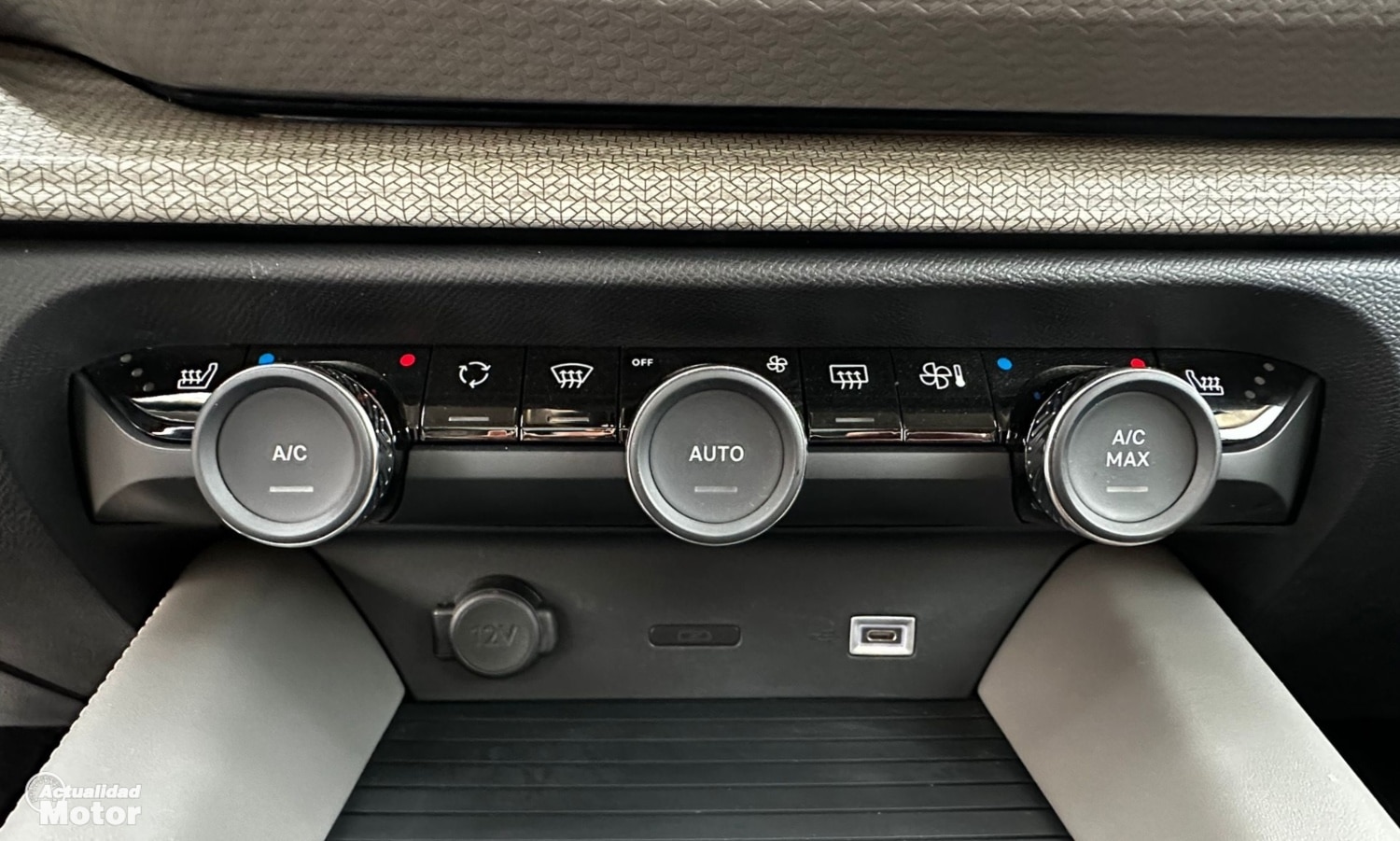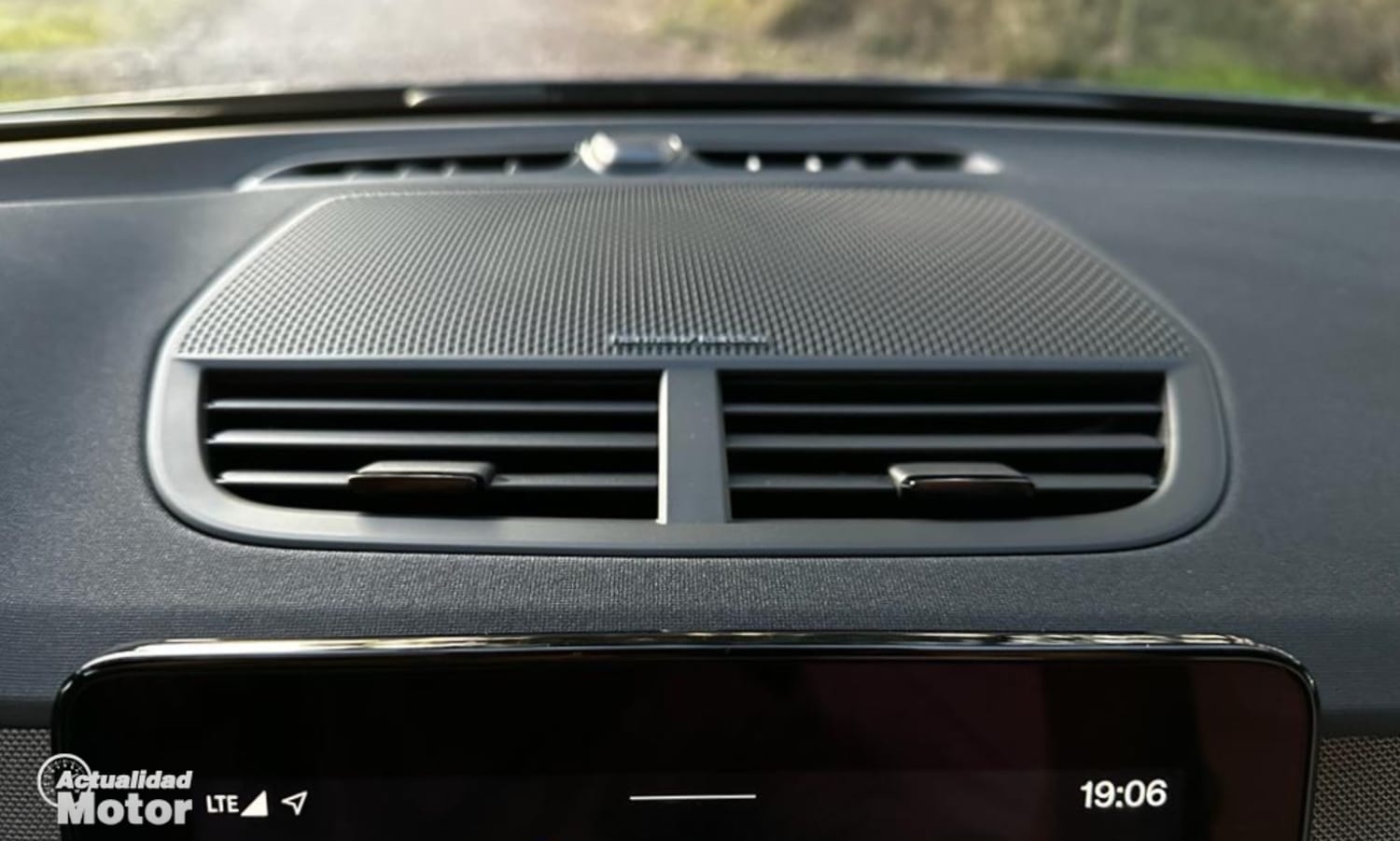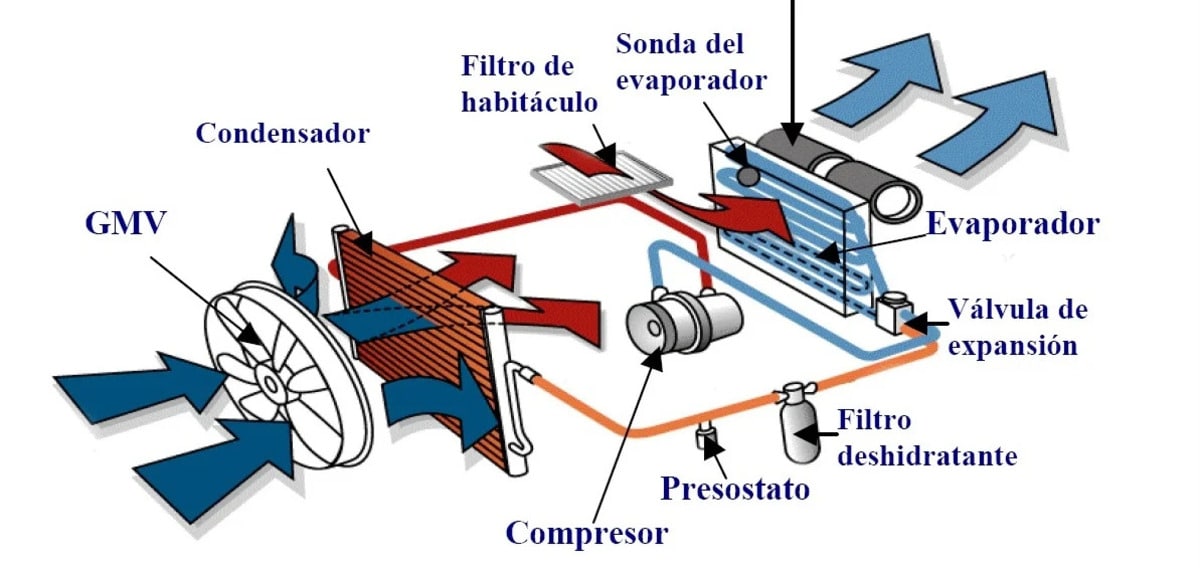
If you remember, last week we were talking about the air conditioning system of our car. Said system It is made up of a large number of elements. that, together, work in coordination to be able to enjoy a pleasant temperature inside our car.
Basically, the air conditioning system of our car works in a way similar to the fridge in our house. The main mission is to transform the hot air from outside into much cooler air.
What is an air conditioning system?

El air-conditioning system of a car is a set of components designed to regulate and control the temperature, ventilation and air quality inside the vehicle's passenger compartment. Its primary goal is to create a comfortable environment for car occupants, whether in extreme heat or severe cold. And sometimes it could even be considered as a safety system, since maintaining a cool temperature in summer can prevent drowsiness behind the wheel and prevent many accidents.
How It Works
The air conditioning system of a car works through a process of cooling and ventilation. Broadly speaking, the operation can be described in the following steps:
- Compression: A compressor in the system compresses the gaseous refrigerant and pumps it at high pressure to the condenser.
- Condensation: In the condenser, the gaseous refrigerant cools down and turns into a liquid due to heat exchange with the outside air. This process releases the absorbed heat from the interior of the vehicle.
- Evaporation: the low pressure liquid refrigerant enters the evaporator located in the passenger compartment of the car. Here, it expands and evaporates by absorbing heat from the cabin air.
- Ventilation: The cabin fan forces air through the evaporator, where it is cooled, and then distributes it through the various air outlets in the vehicle, allowing cool air to reach the occupants.
- Temperature control: Allows the driver and passengers to select the desired temperature using the temperature control. This adjustment is achieved by regulating the speed of the compressor and the amount of refrigerant that expands in the evaporator.
- air recirculation: Some climate control systems offer the option of recirculating the air in the passenger compartment instead of taking in outside air. This can be useful to maintain a constant temperature inside or to prevent the entry of odors or pollutants from the outside. For example, to use in areas such as long tunnels.
As you can see, it is similar to other cooling systems. This is achieved thanks to R134a gas (or others) that circulates through the different pipes of the system. In addition, we can also find other components that are all part of the air conditioning system...
What is refrigerant gas?
El R134a gas It is a refrigerant used in HVAC and air conditioning systems, including automotive air conditioning systems. Its chemical name is tetrafluoroethane (CF3CH2F). R134a is used as a substitute for R12 (chlorofluorocarbon) gas in many air conditioning systems due to its lower impact on the ozone layer.
R134a is a odorless and colorless gas. It has efficient cooling and heat transfer properties, making it suitable for use in HVAC systems. It is non-flammable and non-toxic, making it a safe option.
Additionally, R134a has a relatively low working pressure compared to other refrigerants, making it easy to design and manufacture HVAC systems. However, it is important to note that R134a is a greenhouse gas and contributes to global warming, which is why alternative refrigerants with less environmental impact have been developed, such as the R1234yf.
R1234yf gas is the chemical 2,3,3,3-tetrafluoropropene (CF3CF=CH2). The R1234yf is considered a low global warming potential refrigerant (GWP), which means that it has a lower capacity to contribute to global warming compared to other refrigerants, such as R134a. The GWP of R1234yf is approximately 99% lower than that of R134a.
In addition to its lower environmental impact, R1234yf offers efficient heat transfer and cooling properties, which makes it suitable for use in air conditioning systems. Meets the safety and performance standards required for automotive air conditioning systems.
It is important to note that because R1234yf is a relatively new coolantNot all vehicles use this gas and some older models may still use R134a or other refrigerants. Car manufacturers have been gradually adopting R1234yf in their new models to comply with environmental regulations and reduce the impact on the ozone layer and global warming.
Parts of the air conditioning system

The air conditioning system of a car usually includes the following main parts:
- Compressor: It is the component in charge of compressing and pumping the refrigerant in the system. Its function is to maintain the proper pressure in the air conditioning system.
- Condenser: It is located at the front of the vehicle and acts as a heat exchanger. Here, the refrigerant cools down and turns from a gas to a liquid. That is to say, its mission is to cool the gas and make it pass into a liquid state after having been compressed by the air conditioning compressor.
- pressure switch: There is also usually one of these actuators that closes or opens an electrical circuit depending on the pressure reading of a fluid.
- Evaporator: it is located inside the passenger compartment and also works as a heat exchanger. Liquid refrigerant expands and evaporates, absorbing heat from the cabin air and cooling it.
- passenger compartment fan: It is in charge of moving the air through the system and distributing it inside the car. You can have different speeds to adjust the intensity of the airflow.
- Air filter: this filter prevents impurities from entering the interior of the passenger compartment. Dust particles, pollen are retained in the filter. We will also avoid the smells of other cars or even fuel, so we will breathe much cleaner air.
- dehydrating bottle. The mission of this component is to filter all the impurities found in the ducts. These impurities can be filings or burnt oil, among others. In this way, all the humidity in the circuit is recovered, which helps us to protect the air conditioning compressor.
- Expansion valve: It is also an important element within the air conditioning system of our car. This valve ensures that the fluid that circulates through the ducts passes from a liquid state to a gaseous state, thus lowering the temperature.
- Temperature control: Allows the driver and occupants to set the desired temperature. It may include knobs, buttons, or a touch screen, depending on the design of the vehicle.
In addition to these components, the HVAC system may have other features such as airflow direction control, fan speed control, and specific operating modes such as window demisting to remove condensation or recirculation system. of air.
More information - The air conditioning system and its problems